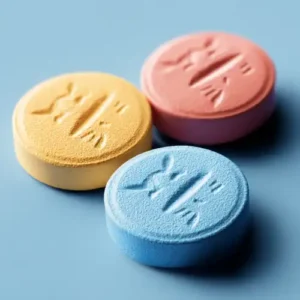Drug testing has become increasingly common in workplaces, schools, and other organisations over the past few decades. The purpose is often stated as promoting safety, productivity, and health. However, drug testing is still controversial, with proponents arguing it improves public welfare and critics claiming it invades privacy and unfairly targets certain groups.
Amidst the debate, many myths and misconceptions exist regarding how drug tests work and what they can actually determine. Below we will explore and debunk four of the most common myths about drug testing.
Myth #1: Drug Testing Accurately Detects All Illegal Drug Use
The truth is no drug test is 100% accurate across the board. The reliability depends on several factors:
– Type of drug – Some illegal drugs like marijuana are easier to detect than others like psychedelics. Marijuana in particular can stay in the system and show up on tests for days or weeks after use, while other drugs like cocaine may only be detectable for a day or two.
– Frequency of use – Occasional users are less likely to test positive than chronic users. Concentration and accumulation in the body over time affects detectability.
– Test type – Urine, hair, saliva, and blood testing vary significantly in accuracy windows. Urine tests tend to be cheapest and most common, but also easiest to subvert with dilution or substitution. Hair testing casts the widest detection net, with a window of up to 90 days.
– Individual physiology – Factors like body fat percentage and metabolism rate also impact how quickly drugs are processed and excreted. So there is no fixed timescale.
No matter how sophisticated the testing method, there will always be ways for determined users to evade detection. Testing mainly deters casual or infrequent use rather than dedicated abuse. It provides an incomplete snapshot at best.
Myth #2: Drug Testing Is Highly Accurate And Never Wrong
While modern testing methodologies have improved, the possibility of incorrect results persists. Common reasons for inaccuracy include:
– Equipment errors – Faulty collection materials, improper storage conditions, mixing of samples, or flaws in testing devices can lead to incorrect results.
– Chemical interferences – From prescription drugs to herbal supplements, various legal substances are known to sometimes cause false positives. These include over-the-counter nasal inhalers, poppy seeds, and decongestants.
– Human error – Mistakes anywhere along the chain – improper specimen collection, labelling, handling, or reporting – may invalidate the final result.
– Dishonesty – Those being tested sometimes attempt to cheat the system through dilution, substitution, or adulteration. This can dupe untrained administrators.
While estimates vary, some research suggests false positive rates may be between 1-5% on workplace drug screens. Rigorous procedures and expert personnel can minimise, but never completely eliminate, the chance of error. No test is infallible.
Myth #3: Beating A Drug Test Is Impossible
Internet forums and shady online retailers offer a myriad of ways people try to game the system. Some of the most common methods include:
– Dilution – Over-hydrating to lower drug metabolite concentration and using diuretics to flush the system faster. This tactic often backfires, as testing facilities now monitor for diluted urine.
– Substitution – Keeping clean urine on hand or purchasing synthetic urine to pass off as their own sample. Must match temperature and other characteristics to evade detection.
– Adulteration – Adding other chemicals along with the sample to interfere with results. Household products like bleach, vinegar, eyedrops and others may cloud certain tests.
– Detoxifiers – Taking special herbal supplements or chemicals that claim to flush out drug residues faster. Evidence on effectiveness is very mixed.
Beatability depends largely on the testing environment. Unobserved collection makes cheating easier. But lab screening often detects adulteration attempts. While homemade remedies are iffy, there is a cat-and-mouse game between testers and those seeking to evade detection.
Myth #4: Cannabis Stays In Your System For Months
The persistence of cannabis metabolites in the body leads many to overestimate how long it remains detectable. Detection windows depend strongly on frequency of use:
– Occasional users – Tests may detect cannabis for 3 to 8 days after last use.
– Moderate users – Typical detection window is 1 to 2 weeks.
– Chronic heavy users – Cannabis metabolites may be detected for 1 month or longer.
The chemical THC lingers in blood and saliva for just a day or two. But its metabolite THC-COOH can be detected in urine for extended periods as it accumulates in fat cells. Detox times increase with heavier, long-term use as levels build up. Individual metabolism, exercise, diet and other factors also influence timeframes.
While months-long detectability is possible in rare cases, it holds mostly for heavy users being tested by hair tests. For the average individual, the window is shorter. Overall, marijuana lingers much longer than most other recreational drugs. But detection periods measured in months rather than weeks are not typical or average.
The Future Of Drug Testing
As drug testing methods continue to evolve, we may see the development of new technologies that can detect a wider range of substances with greater accuracy and efficiency. For instance, researchers are exploring the use of advanced analytical techniques like mass spectrometry and chromatography to identify designer drugs and novel psychoactive substances that evade conventional screens. However, any new methodologies will need rigorous validation before widespread adoption.
Looking ahead, the landscape of drug testing is likely to be shaped by ongoing legal and societal debates around privacy, discrimination, and the changing status of certain drugs. Some jurisdictions are moving to decriminalise or legalise substances like marijuana, which could impact testing practices. Ultimately, the future of drug testing will require a balanced approach that prioritises safety and fairness while respecting individual rights. As the science progresses, policies and attitudes will need to evolve in tandem.
In Conclusion
Drug testing continues to proliferate amidst ongoing debate over ethics and efficacy. But public understanding is often clouded by significant misconceptions. Accuracy, reliability, beatability, and detection windows all differ from common perceptions.
Like any diagnostic procedure, testing has advanced but remains imperfect and probabilistic. No technology can provide a definitive binary determination of drug use. There are always uncertainties and possibilities of error. The responsible use of testing requires acknowledging its limitations as much as its capabilities.
Photo by Anthony Cunningham for Zoom Testing
Zoom Testing is a leading UK drug testing company and a supplier of Drug Test Kits.





